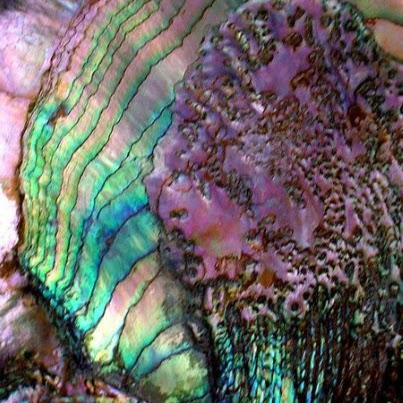Don Lin
Deceased
from Bellevue, WA
- Also known as:
-
- Li Nd
- Phone and address:
-
10030 21St St, Bellevue, WA 98004
4254675602
Don Lin Phones & Addresses
- 10030 21St St, Bellevue, WA 98004 • 4254675602 • 4256464503
- Spokane, WA
- Morristown, NJ
- 10030 NE 21St St, Bellevue, WA 98004 • 2063545965
Work
-
Company:National city mortgage co
-
Address:3232 Newmark Dr, Seattle, WA 98104
-
Phones:2066743400
-
Position:Network security engineer
-
Industries:Semiconductors and Related Devices
Resumes

Don Lin
view source
Don Lin
view source
Partner
view sourceWork:
Guoqian Vc
Partner
Partner

Don Lin
view source
Don Lin
view source
Don Lin
view source
System Test Engineer At Areva Solar
view sourcePosition:
System Test Engineer at AREVA Solar
Location:
Mountain View, California
Industry:
Mechanical or Industrial Engineering
Work:
AREVA Solar - Mountain View, CA, U.S since Apr 2011
System Test Engineer
UCLA - UCLA boiling heat transfer lab Sep 2009 - Mar 2011
Research assitant
System Test Engineer
UCLA - UCLA boiling heat transfer lab Sep 2009 - Mar 2011
Research assitant
Education:
UCLA 2009 - 2011
Master of Science (M.S.), Heat & Mass transfer UCLA 2007 - 2009
Bachelor's degree, Mechanical Engineering
Master of Science (M.S.), Heat & Mass transfer UCLA 2007 - 2009
Bachelor's degree, Mechanical Engineering
Skills:
Matlab
COMSOL
Solidworks
ANSYS
Data Mining
Solidworks
COMSOL
Solidworks
ANSYS
Data Mining
Solidworks
Name / Title
Company / Classification
Phones & Addresses
Network Security Engineer
National City Mortgage Co
Semiconductors and Related Devices
Semiconductors and Related Devices
3232 Newmark Dr, Seattle, WA 98104
Us Patents
-
Automated Sport Boundary Officiating System
view source -
US Patent:59545992, Sep 21, 1999
-
Filed:Jan 13, 1998
-
Appl. No.:9/006534
-
Inventors:Don L. Lin - Neshanic Station NJ
-
Assignee:Lucent Technologies, Inc. - Murray Hill NJ
-
International Classification:A63B 6100
-
US Classification:473467
-
Abstract:An automated method and apparatus for determining whether a ball in a sport has contacted the ground in or out of bounds as well as where along the boundary the impact occurred. A pair of conductors run adjacent to and beneath the boundary lines of the sport court or field. The two conductors are electrically separated by an insulator, but will contact each other at the point of impact and thereby create an electrical short when a force, such as is caused by the impact of a ball, is applied to the boundary line. The short causes two counter-propagating voltage pulses to travel out from the location of the short towards a detector which detects the pulses and the time delay between receipt of the pulses. The fact of whether pulses were detected is indicative of whether the ball was in or out of bounds, while the time delay between the pulses is indicative of the location along the boundary line where the ball struck the ground.
-
Binary Electrostatic Discharge Locator
view source -
US Patent:6175238, Jan 16, 2001
-
Filed:Mar 17, 1999
-
Appl. No.:9/271085
-
Inventors:Don L. Lin - Neshanic Station NJ
-
Assignee:Lucent Technologies Inc. - Murray Hill NJ
-
International Classification:G01N 2760
G01R 2912 -
US Classification:324452
-
Abstract:This invention relates to a system and method for economically locating an ESD event with a reasonable degree of accuracy. It performs this function using a binary approach in which one or more binary ESD locator boxes are used. Each of these binary ESD locator boxes incorporates two antennas and performs the function of determining which of these antennas receives the ESD signal first. This determination establishes the ESD event as occurring to one side of a planar surface. By incorporating one or more additional binary ESD locator boxes, the system can determine whether an ESD event occurred within a two dimensional area or within a three dimensional area.
Googleplus

Don Lin
Education:
Nanyang Academy of Fine Arts - Interior design

Don Lin
About:
你好
Bragging Rights:
在女生宿舍房間烤肉

Don Lin

Don Lin

Don Lin

Don Lin

Don Lin

Don Lin

Don Lin
view source
Don Lin
view source
Don Don Lin
view source
Don Lin
view source
Don Lin
view source
Don Lin
view source
Don Lin
view source
Don Lin
view sourceClassmates

Don Lin
view sourceSchools:
St. Mary High School Jersey City NJ 1990-1994
Community:
Eunice Rosario, Michele Carpena, Valentine Stanowski
Myspace
Youtube
Get Report for Don Lin from Bellevue, WADeceased





